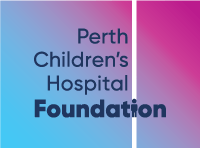Leading the way in Paediatric Rehabilitation
- Perth Children's Hospital Foundation
Leading the way in Paediatric Rehabilitation
- Perth Children's Hospital Foundation
Thanks to the generosity of our donors, the Department of Paediatric Rehabilitation at Princess Margaret Hospital has installed the first Paediatric Robotic devices in Australia to give children who have neurological or spinal damage the best chance at achieving their rehabilitation goals.
PMH Foundation purchased a state-of-the-art Armeo Spring Paediatric Robotic Device, known as a Robotic Arm, in September 2014 followed by a YouGrabber Robotic device in November 2015.
Senior Occupational Therapist, Jenny Colegate, explains the devices which, as well as helping children here in WA, are receiving a great deal of interest from other children’s hospitals around the country with several therapists visiting the team to learn more about them.
“The Robotic Arm is primarily designed to help children who have had a neurological disease or injury which has resulted in them having a limited amount of upper limb movement,” explains Jenny.
“It has an exoskeleton which works by embracing the whole arm from shoulder to hand, and counter balances the weight of the arm to enhance existing motor function. The device is linked to a computer-based 3D work space through which children play a range of fun, interactive games. The games are based on particular arm and hand movements, which help them to relearn or build their active movement skills.”
The devices are allowing the hospital’s rehabilitation team to improve therapy outcomes for children with limited arm movement. Activities using the Robotic Arm increase upper limb movement and strength, and help facilitate functional skills such as dressing, eating, and tasks related to school work.
Based on the outstanding results children were achieving with the Robotic Arm, a YouGrabber was introduced to further support the Department. While the Robotic Arm focuses on the upper limb, shoulder and elbow, the YouGrabber works on wrist, finger and thumb strengthening alongside sustained grasp and release skills. Like the Robotic Arm, the YouGrabber uses motivating virtual computer games for therapy.
“We’ve found the children are really motivated by both the Robotic Arm and the YouGrabber and they want to play the rehabilitation games again and again – which is what sets this apart from traditional therapies. Sometimes it can be difficult to get children to complete enough repetitive movements to work on strength, but because they are so motivated by screen-time and gaming, we find the children now look forward to their therapy,” Jenny said.
“Some of the outcomes we have seen have been well beyond our expectations. From a therapy perspective both devices are able to record data on each child and measure their performance improvements. We are collecting data from participants using pre and post-therapy assessments to measure the effectiveness of the arm and grabber in paediatric rehabilitation, and ultimately how we can use the devices in other ways.”
“These are the only paediatric robotic devices for the upper limb of this kind in Australia, so PMH Foundation is allowing us to lead the way in this field. We can see the benefits so clearly and it’s changed our whole working practice,” explained Jenny.
One child helped by both the Robotic Arm and YouGrabber is seven-year-old Alexey who had no function in his left arm after suffering a haemorrhagic stroke when he was just six weeks old. Alexey was one of the first children to start using the devices and his family and doctors are seeing incredible results.
“Until he started using the Robotic Arm and YouGrabber Alexey was a one-armed person, because he had zero voluntary movement and zero awareness in his left arm,” Alexey’s mum Anna says.
“But once he started the treatment we noticed he began to move his fingers, which is something we’d never dreamed could happen for him. Now we’re at the stage where he still has impaired mobility in his arm but he’s initiating movement himself which is a huge step forward. He can use his left arm for simple things like stabilising objects and swimming freestyle. Our family is extremely grateful to have access to the Robotic Arm and YouGrabber, because they have changed Alexey’s life.”
